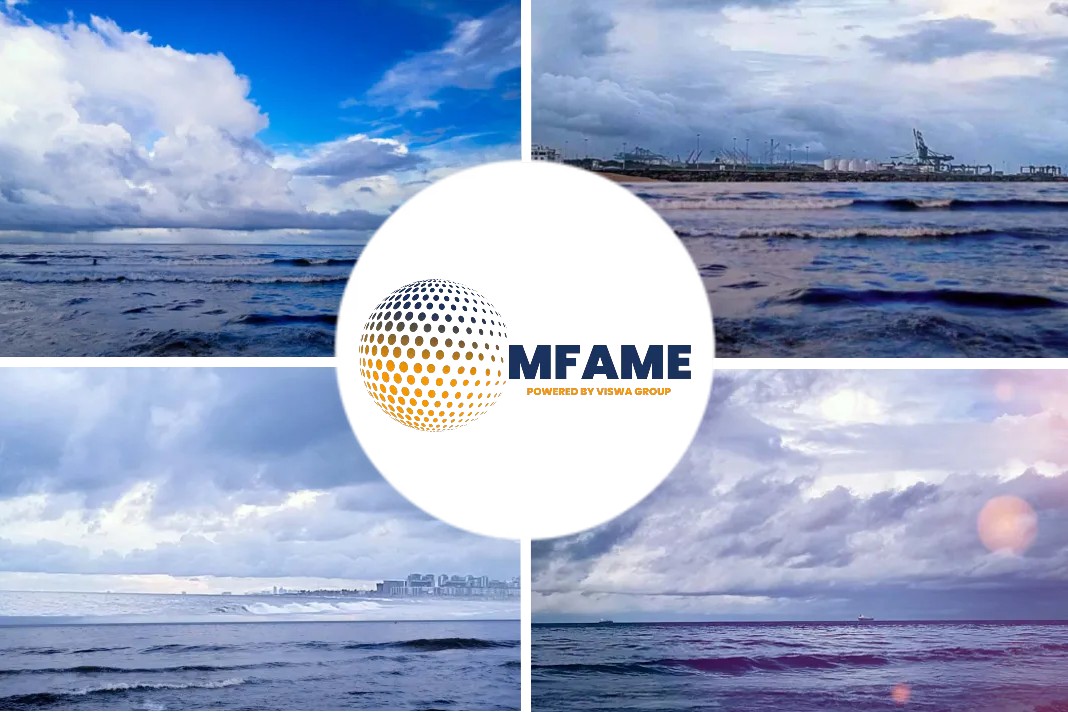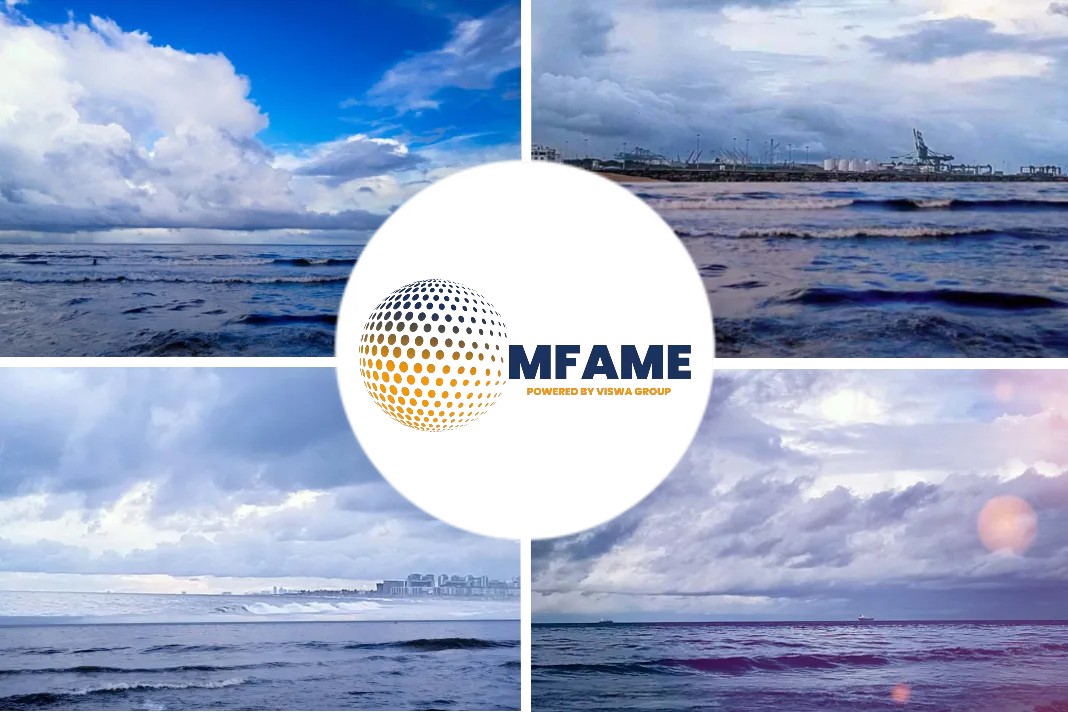The Australian Transport Safety Bureau (ATSB) reports of shock loading of the platform and serious injuries on board Berge Daisetsu.
Shock loading on board Berge Daisetsu
On 11 January 2018, a team of six crew members was conducting cargo hold cleaning and
painting under the supervision of the chief mate on board Berge Daisetsu.
While working aloft, on a jury-rigged platform suspended from a cargo crane, the crane falling block and hook caught and then suddenly released from the hatch coaming.
That resulted in shock loading of the platform and serious injuries to two crewmen.
Investigation into the incident
The ATSB’s investigation found that prior to starting the work, the ship’s crewmembers had
several discussions, made plans, and completed a risk assessment.
However, the work was not conducted in accordance with company safety management procedures or industry best practice with regard to risk management and working aloft permit requirements.
Additionally, the deck crane was being operated with its working limits bypassed when used to support the ship’s crew during the painting task.
This enabled the crane to reach a position which allowed the block to contact and catch on the hatch coaming.
Finally, the fall arrest equipment used by the crew on the platform was incorrectly attached. As such, had either of the crewmen fallen from the platform the equipment would not have worked correctly, resulting in serious or fatal injuries.
Aftermath of the incident
Berge Bulk Maritime has completed the supply of approved working aloft equipment to its geared bulk carriers and is progressing modification of vessel cranes for personnel lifting.
Specific working aloft and bulk carrier safety training has been conducted and made mandatory for crew members every two years. In addition, a fleet-wide assessment of safety maturity is progressing.
Safety message
This accident illustrates the consequence of deviating from accepted safety management
procedures and industry best practice.
The use of machinery and equipment contrary to its intended purpose makes hazard identification difficult and exposes those directly involved to significantly increased risk.
Berge Daisetsu
At the time of the incident, Berge Daisetsu was registered in the Isle of Man, owned by the Berge Daisetsu Company (Marshall Islands), and managed by Berge Bulk Maritime (Singapore). The ship was built in 2015 in Japan and classed with DNV GL.
Cargo cranes
Berge Daisetsu has five cargo holds serviced by four, Mitsubishi 30 t capacity hydraulic deck cranes – crane numbers 1 to 3 have a working radius of 24 m and number 4 (aft) crane a working radius of 26 m.
The cranes were not rated or approved for personnel lifting duty.
Crew members
Berge Daisetsu had a crew of 21 appropriately qualified Chinese nationals including 2 cadets.
The master held a Chinese certificate of competency and had joined the ship in August 2017. This was his first contract with Berge Bulk but he had sailed as master in bulk carriers since 2010.
The chief mate held a Chinese chief mate’s certificate of competency and had been on board since July 2017. He first went to sea in 2007 and this was his second ship as chief mate, both were geared bulk carriers.
This was the first time the chief mate had undertaken this task on board Berge Daisetsu but he had done similar hold painting work on other ships using lifting equipment designed for the task.
The bosun had a current Chinese certificate of proficiency as an able seafarer. He had worked at sea since 2007 and joined Berge Daisetsu in October 2017. This was his first time on this ship but he had driven cargo cranes on several previous occasions though this was the first time he had driven a crane for lifting personnel.
- AB1 (monitor) held a Chinese certificate of competency as third officer in charge of a navigation watch and first went to sea as a deck cadet in 2014. This was his first ship with Berge Bulk and he joined Berge Daisetsu as an able seaman in October 2017.
- AB2 (directing work from the platform) first went to sea in 2004 and held a Chinese certificate of proficiency as an able seafarer. This was his first time on board Berge Daisetsu and he had worked as a bosun or able seaman on several geared bulk carriers prior to joining Berge Bulk in 2016.
- AB3 (assisting AB2 with painting) held a Chinese certificate of proficiency as an able seafarer. He joined Berge Daisetsu and Berge Bulk in October 2017 after several years’ experience serving as an able seaman on general cargo ships and bulk carriers.
The ordinary seaman had been at sea since 2017 and held a Chinese certificate of proficiency for seafarers (as rating forming part of a navigational watch). Berge Daisetsu was his second ship, both with Berge Bulk.
The deck cadet held a Chinese certificate of proficiency for seafarers having completed basic training. He joined Berge Bulk in 2017 and Berge Daisetsu was his first ship.
Findings
From the evidence available, the following findings are made with respect to the serious injuries sustained on board Berge Daisetsu whilst berthed in Portland, Victoria on 11 January 2018.
These findings should not be read as apportioning blame or liability to any particular organisation or individual. Safety issues, or system problems, are highlighted in bold to emphasise their importance.
A safety issue is an event or condition that increases safety risk and (a) can reasonably be
regarded as having the potential to adversely affect the safety of future operations, and (b) is a characteristic of an organisation or a system, rather than a characteristic of a specific individual, or characteristic of an operating environment at a specific point in time.
Contributing factors
- The suspended painting platform was upset when the hook was moved and suddenly came free from being caught under the hatch coaming. This led to the occupants falling on the platform and receiving serious injuries.
- Contrary to normal operating procedures, the deck crane was being operated with its working limits bypassed when used to support the ship’s crew during the painting task. This enabled the crane to reach a position which allowed the block to be in contact with and catch on the hatch coaming.
- The task was not conducted in accordance with company safety management procedures or industry best practice with regard to risk management and working aloft permit requirements.
- Consequently, machinery and equipment were used in a way they were not designed or
approved for, making hazard identification difficult and exposing the workers to increased risk.
Other factors that increased risk
The fall arrest equipment used was incorrectly attached to the workers on the
suspended platform.
Consequently, had either of them fallen from the platform the equipment would not have worked correctly, resulting in serious or fatal injuries.
Safety issues and actions
The safety issue identified during this investigation is listed in the Findings and Safety issues and actions sections of this report. The ATSB expects that all safety issues identified by the investigation should be addressed by the relevant organisation(s).
In addressing those issues, the ATSB prefers to encourage relevant organisation(s) to proactively initiate safety action, rather than to issue formal safety recommendations or safety advisory notices.
Depending on the level of risk of the safety issue, the extent of corrective action taken by the relevant organisation, or the desirability of directing a broad safety message to the marine industry, the ATSB may issue safety recommendations or safety advisory notices as part of the final report.
All of the directly involved parties were provided with a draft report and invited to provide
submissions. As part of that process, each organisation was asked to communicate what safety actions, if any, they had carried out or were planning to carry out in relation to each safety issue relevant to their organisation.
The initial public version of these safety issues and actions are repeated separately on the ATSB website to facilitate monitoring by interested parties. Where relevant the safety issues and actions will be updated on the ATSB website as information comes to hand.
Safety issue description:
The fall arrest equipment used was incorrectly attached to the workers on the suspended platform.
Consequently, had either of them fallen from the platform the equipment would not have worked correctly, resulting in serious or fatal injuries.
Proactive safety action taken by Berge Bulk Maritime
Action number: MO-2018-001-NSA-003
Berge Bulk Maritime has advised the ATSB that it has taken the following actions to address this issue:
- completed on board working aloft training of all staff
- completed on board training in bulk carrier personal safety and environmental protection
including working safely in cargo holds and the correct donning and use of personal protective
equipment - added a mandatory working aloft training module to fleet-wide on board training programmes, which is repeated every two years.
Additional safety action
Whether or not the ATSB identifies safety issues in the course of an investigation, relevant
organisations may proactively initiate safety action in order to reduce their safety risk.
The ATSB has been advised of the following proactive safety action in response to this occurrence Berge Bulk Maritime advised the ATSB that it has also taken the following actions as a result of this incident:
- completed the fleet-wide purchase and supply of Class-approved work platforms for work aloft to all company-owned geared bulk carriers
- commenced a programme to have all fleet geared bulk carriers’ cranes modified and approved for personnel lifting at scheduled dry dockings
- engaged an external consulting company to conduct a fleet-wide assessment of safety
maturity by measuring the company’s level of safety practice and how well this is embedded in the behaviour and belief of employees. This assessment is intended to assist the development and implementation of an integrated company-wide safety strategy.
Did you subscribe to our daily newsletter?
It’s Free! Click here to Subscribe!
Source: Australian Transport Safety Bureau



















